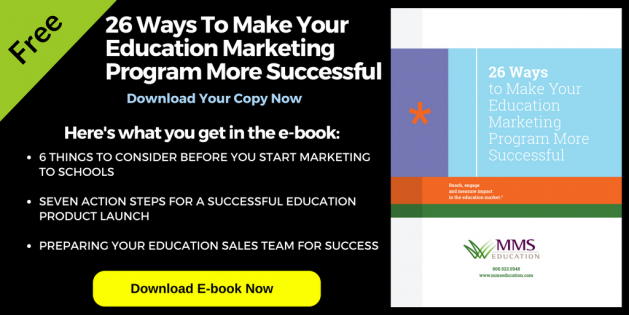Many believe that if they build a great online education program, and it is free, educators will flock to use it. Believe it or not, it’s not easy “selling” a free product or program to schools. And in this case, we aren’t talking about a freemium to premium model, where a product begins as a free program with the plan to convert users to paid subscribers. In this case, we mean robust, high-quality education online programs, often sponsored by corporate foundations or not-for-profits where the program and content are 100% free and always will be.
In the past three decades, MMS Education has helped develop, build, launch, and maintain numerous free programs for educators, and one truth has remained constant during all these years: Selling a free program can take as much marketing savvy and effort as selling a program for a fee. Why? Because even though the product is free, you are asking educators to invest their time, and time is one of the least available resources they have. In addition, educators often wonder “what’s the catch?” and what’s in it for them. They may have a number of reasons why they can’t try a new program, even though it is free. They are pressed for time and do not have room in their curriculum to add new things. They are “teaching toward the test.” They are too stressed to listen to your pitch. Or, they’ve heard it before.
So, how can you influence acceptance and adaptation of your free product or program?
Demonstrate success and impact
When you describe your product or program to educators, be very clear about the problem you are solving and the impact or change your product will make. Show where your product has been successful and why. Show what impact your product or program has had or can have in their school. This means you will want to have tested your product or program on a small scale in several pilots, ideally in different types of districts and environments. Show how other schools have used your product or program with success. That will give you an advantage over your competition, especially if the success story is told from an educator’s perspective. Peer-to-peer marketing is always the best, so gather and share those testimonials and success stories.
Worth their time and effort
As we mentioned previously, an educator’s time is their most precious resource. They will be investing their valuable time learning how to use your program. Make sure their investment is worthwhile. Ensure that educators know what they are getting with your product or program. Offer resources to make it easy to use. Have the kinks worked out, FAQs ready, and customer support available before you launch. Educators need to feel assured that your product or program is worth their time and most importantly, that their students will benefit from it, which leads us to our last point.
Value
Being able to communicate the value of your product or program (based on what other educators have said about it) will give educators a better understanding of what your product or program is about and why it could be useful to them. Free does not mean “cheap” or “invaluable.” It may have the backing of funders that gives it its value or legitimacy. It may have helped other educators achieve goals. It may be proven to help students learn or grow. Make sure your product or program users are willing to share their story about why it is valuable with others.
So if you are offering a free program for educators, remember a few key points to build an active customer base of engaged customers using your program. These include:
- Demonstrate how your program has had impact and success.
- Show educators that the investment of their time will be worthwhile.
- Communicate the value of your program and how it has helped teachers and students.
For four decades, MMS Education has been helping companies like yours market, sell, launch, and manage free products and programs to schools and can help you do the same. Call us today at 866-382-6116 or fill out this form to see how MMS Education can help you reach, engage, and measure impact in the PreK-12 education market.

